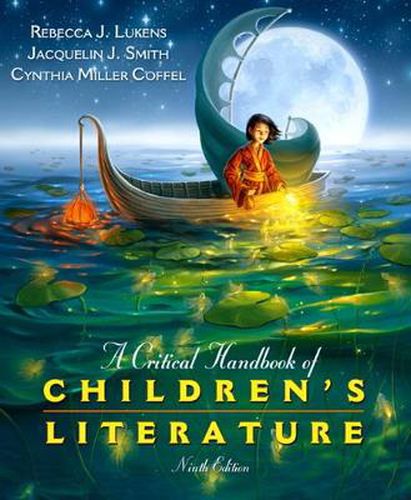Readings Newsletter
Become a Readings Member to make your shopping experience even easier.
Sign in or sign up for free!
You’re not far away from qualifying for FREE standard shipping within Australia
You’ve qualified for FREE standard shipping within Australia
The cart is loading…






Critical principles and standards are demonstrated using actual examples of quality children’s literature to help future teachers, practicing teachers, librarians, and parents select the best books for the classroom, library, or home.
Neither a typical classroom textbook nor an anthology of selected stories and book summaries, this thorough resource demonstrates how to select quality children’s literature. Specific examples from numerous children’s books illuminate each point the authors present.
The text focuses on classic and recent children’s books that showcase positive examples of the literary elements, formats, and genres that organize the field of children’s literature. Definitions of literary terms are interwoven throughout in-depth discussions of plot, character, theme, setting, point of view, and style and tone. Sound criteria for assessing the merit of children’s books; chapters on poetry, biography, and informational books; a section on censorship; and thinking multiculturally combine to make this an important revision.
New to this edition are fresh examples of quality children’s literature infused with many multicultural titles; an in-depth discussion of the complex relationship between pictures and text in contemporary picturebooks; descriptions of graphic and verse novels; discussions of new issues, such as the risky topics addressed in some books for children, and suggestions of ways to use picturebooks created for older readers. Wrapping up this edition is a discussion of ways to engage readers through read alouds and interactive discussions.
$9.00 standard shipping within Australia
FREE standard shipping within Australia for orders over $100.00
Express & International shipping calculated at checkout
Critical principles and standards are demonstrated using actual examples of quality children’s literature to help future teachers, practicing teachers, librarians, and parents select the best books for the classroom, library, or home.
Neither a typical classroom textbook nor an anthology of selected stories and book summaries, this thorough resource demonstrates how to select quality children’s literature. Specific examples from numerous children’s books illuminate each point the authors present.
The text focuses on classic and recent children’s books that showcase positive examples of the literary elements, formats, and genres that organize the field of children’s literature. Definitions of literary terms are interwoven throughout in-depth discussions of plot, character, theme, setting, point of view, and style and tone. Sound criteria for assessing the merit of children’s books; chapters on poetry, biography, and informational books; a section on censorship; and thinking multiculturally combine to make this an important revision.
New to this edition are fresh examples of quality children’s literature infused with many multicultural titles; an in-depth discussion of the complex relationship between pictures and text in contemporary picturebooks; descriptions of graphic and verse novels; discussions of new issues, such as the risky topics addressed in some books for children, and suggestions of ways to use picturebooks created for older readers. Wrapping up this edition is a discussion of ways to engage readers through read alouds and interactive discussions.